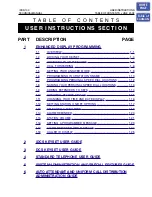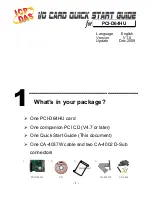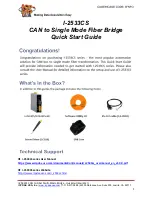
8
SKYHYDRANT
- USER GUIDE & DATA SHEET
ULTRAFILTATION REMOVAL CRITERIA
A patented low-pressure ultrafiltration technology meeting and exceeding World Health
Organisation requirements for safe drinking water.
Proprietary and patented low-pressure ultrafiltration membrane technology is highly effective in removing all
non-dissolved species in feed waters. Ultrafiltration is classified by the World Health Organisation (WHO) as
effective removal of disease causing pathogens and exceeds requirements for key criteria to produce safe
drinking water. However, it is important to test the water and validate the composition of the feed water.
Please refer to the Technical Bulletins and Specifications to obtain specific information on performance.
Ultrafiltration (to 0.04um nominal)
WILL REMOVE
Pathogens (disease causing organisms) and Turbidity (dirt):
1.
PATHOGENS removed (to log reduction value >4) by ultrafiltration include:
2. TURBIDITY
NTU (Nephelometric Turbidity Units) is removed by ultra-filtration to levels below <0.1 NTU. Turbid
water contains suspended matter such as clay, slit, fine fragments of organic matter, and similar
material. TURBIDITY levels of up to 1000 NTU can be removed however levels below 500 NTU are
preferred.
3. TOTAL SUSPENDED SOLIDS (TSS) will be removed. TSS is similar to turbidity.
4. IRON AND MANGANESE if first oxidised or if colloidal can be removed by ultrafiltration.
5. ARSENIC MANGANESE if first oxidised can be removed by ultra iltration.
The World Health Organisation (WHO) reports that ultrafiltration provides complete removal of bacteria and viruses
(disease causing pathogens) as outlined in WHO document “GUIDELINES FOR DRINKG WATER
QUALITY” under “Treatment Process” as referenced in the WHO website.
• Total Coliform TC
• Total Coliform FC
• Ecoli
• Virus (significantly reduces virus levels)
• Bacteria
• Protozoa
• Cysts
• Helminths
Note: mg/L (milligrams per litre) also equals ppm (parts per million); WHO (World Health Organisation)
1. Chemicals not removed by ultrafiltration include:
• Arsenic
(unless first oxidised) (WHO safe drinking standard - Max 0.01 mg/L)
• Cadmium
(WHO safe drinking standard - Max 0.003 mg/L)
• Chromium
(WHO safe drinking standard - Max 0.05 mg/L)
• Copper
(WHO safe drinking standard - Max 2.0 mg/L)
• Cyanide
(WHO safe drinking standard - Max 0.07 mg/L)
• Fluoride
(WHO safe drinking standard - 1.5 mg/L)
• Lead
(WHO safe drinking standard - Max 0.01 mg/L)
• Mercury
(WHO safe drinking standard - Max 0.006 mg/L)
• Nickel
(WHO safe drinking standard - Max 0.07 mg/L)
• Nitrate
(WHO safe drinking standard - Max 50 ml/L as NO3)
• Nitrite
(WHO safe drinking standard - 3 mg/L as NO2)
• Sulphate
(Safe Drinking Levels: 250 mg/L but up to 500mg/L can be tolerated
Ultrafiltration (to 0.04um nominal)
WILL NOT REMOVE
Chemicals or Minerals or Salinity (salt) from water:






































